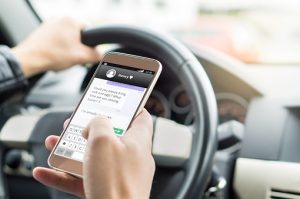How NHTSA Is Trying to Fight Rising Risks of Car Accidents Due to New Tech
 Motorists are not giving up on using their phones and other electronic devices behind the wheel. Although studies have shown the majority of Americans know that it is dangerous to drive while using a cell phone, most people actually continue to drive while distracted despite awareness of the risks. The problem is so bad, National Safety Council (NSC) estimates that a full nine percent of drivers on the road at any given time are using their cell phones.
Motorists are not giving up on using their phones and other electronic devices behind the wheel. Although studies have shown the majority of Americans know that it is dangerous to drive while using a cell phone, most people actually continue to drive while distracted despite awareness of the risks. The problem is so bad, National Safety Council (NSC) estimates that a full nine percent of drivers on the road at any given time are using their cell phones.
The continued use of phones and other new technologies is such a big problem that distracted drivers sent the death toll rising dramatically. Between this year and last year, there was a 10.4 percent increase in the number of fatalities in auto accidents when comparing January to June 2015 and January to June 2016. With 17,775 fatalities in the first half of 2016 alone, New York Times indicates the biggest year-to-year rise in death rates occurred in a half century.
In light of the fact people are unlikely to actually give up their electronic devices totally while in the car, National Highway Traffic Safety Administration is trying to mitigate the tremendous damage distracted driving is doing to road safety. NHTSA has recently come out with two-part guidelines which are aimed at reducing the dangers of in-vehicle tech use.
The first part of the guidelines dealt with infotainment systems, which are the comprehensive voice-controlled systems found in many new cars. The second part of the guidelines addressed the integration of phones and other after-market devices with infotainment systems built into vehicle.
The hope is that if safety features on these systems can be improved, and if motorists talk to these systems instead of physically holding their phones, typing into their phones, and looking at their phones, maybe distracted driving risks can be reduced. Of course, the problem is, National Safety Council has warned that hands-free electronic use isn't really safer than electronic use that requires you to hold and look at the phone.
When using a hands-free device, like an infotainment system in your car, the amount of your brain's energy that is focused on driving is still depleted substantially. Instead of working to process visual signals from what you see on the road, and instead of reacting when you see something, your brain is devoting its attention to talking on the phone or talking to the infotainment system. The result of this is that you may actually end up not "seeing" around 50 percent of what is in front of you since your brain doesn't process the information properly.
If distracted drivers cannot "see" or react appropriately to obstacles while driving, it is no wonder that the rise in smartphone use and the increased use of infotainment systems in cars has contributed to the death rate rising so much. Motorists need to be aware of the dangers and do their part by not driving while distracted, even if that distraction is hands-free.
